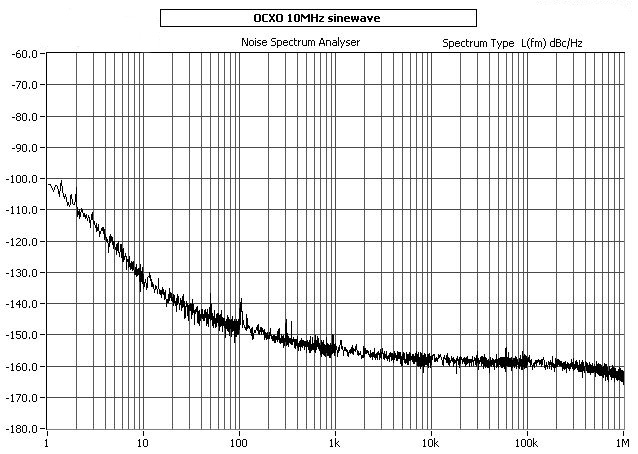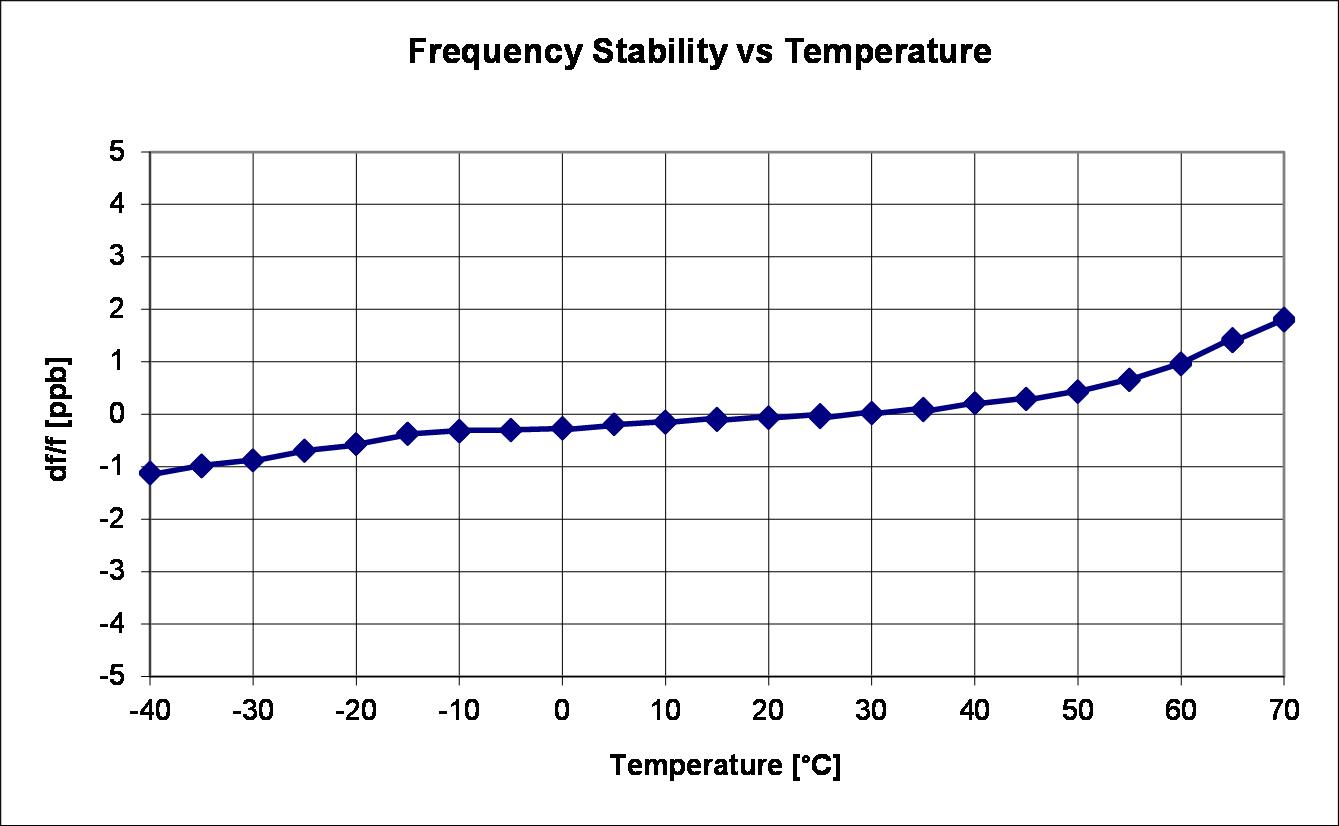Studying stability
Clock references empower modern communications, but making room for even more connections will require new solutions to creating even more stable clock sources. By Uwe Schweickert, R&D Manager at IQD FOQ GmbH.
All the systems in our modern world need a clock either as a reference or for synchronisation. Wireless communication is a good example; these digital systems consist of a number of radio cells and the users are normally mobile, so they move from one cell to another. Users don’t want to lose their connection when they move, so there must be a connection between the cells and also a synchronisation to handover the connections. Responsibility for this synchronisation is a high precision crystal oscillator, normally an ovenised (oven controlled) crystal oscillator commonly known as an OCXO. Also for broadcasting transmitters it is very important to have a highly stable clock which is used for reference and for synchronisation.
For these fields of application, OCXOs in the frequency range from 10 to 40MHz are typically used. Depending on the requirement of the system performance, high performance TCXOs can also be used or for very high performance, a GPS based synchronisation module can be used; this includes an OCXO which is locked to a very accurate reference signal via GPS.
Changing requirements
If we look back some years ago, the requirement for such systems was much lower. We had analogue telephone lines with a frequency range of 300Hz to 3.4kHz, for mobile phones we had huge and very expensive systems which could be installed in a car, but it was not possible to buy a hand-held unit. For data transmission there was essentially only the Fax; a system limited to sending scanned paper documents.
The standard today is different kinds of Digital Subscriber Line (DSL) for wired data communication with transfer rates up to 50Mbit/s on standard copper lines. For wireless communication we use either the Global System for Mobile Communications (GSM) or the Universal Mobile Telecommunications System (UMTS) which allows data transfer rates via High-Speed Downlink Packet Access (HSDPA) for download up to 7.2Mbit/s and very good network coverage, allowing mobile phones to be used nearly everywhere.
In the near future we will have much more interaction and linking of people, home and vehicle for communication, internet and multimedia. New standards like 3GPP Long Term Evolution’ (LTE), Next-Generation Network (NGN) and Fiber to the Home (FTH) will help to cope with the rapid increase of data volume and higher transfer rates.
The broadcasting industry has also undergone big changes. Before Satellite TV was introduced, there were for example in Germany only 3 analogue programs available via a terrestrial antenna. The quality was poor, because of the refresh rate of only 50Hz. Today the standard is High Definition (HD) digital broadcasting via cable or satellite, with many more channels based on new digital modulation techniques which allow much more data to be transmitted compared with the old analogue modulation techniques. Also in the future we will have many more functions such as 3D without special glasses and much more interaction between the users and the broadcast stations. This will require much more data, so the requirements for the modulation techniques — as well as for the reference clocks and synchronisation modules — will increase.
New demands
These new system requirements necessitate new solutions from the oscillator industry as several performance parameters have to be improved.
Due to the significant (and future) increase in users, more transfer channels or wider bandwidth will be needed. As the available frequency range for all technologies is limited, one option is to reduce the tolerances; tighter tolerances means the gap between channels can be reduced, enabling the bandwidth for each channel to increase, or using the same bandwidth add more channels in the same frequency range.
Higher Transfer Rates require reduced Bit Error Rates (BER) and to meet this requirement the stability of the clock source must improve, which in turn requires the Jitter to be reduced and the Phase Noise performance to be improved.
Most communication systems need higher reference clocks, such as high performance crystal oscillators can deliver, to generate higher frequencies from a low frequency clock. This can is often realised by using a Phase Locked Loop (PLL), however this can decrease the performance of the system. To achieve higher resolution, one approach is to use higher reference clock oscillators, but to realise these new requirements there are some parameters which must also be considered.
The most important parameter for the stability of an OCXO is the Crystal. For high performance OCXOs an SC-cut crystal is used; for 10MHz a 3rd Overtone crystal is typical. The oscillation mode 3rd Overtone is preferred compared to a Fundamental mode because of its higher stability in all cases, thanks to the blank thickness; as it is inversely proportional to the crystal frequency, a highly stable crystal should have a thick blank to reach the best stability.
When we talk about stability this has to be defined in a more accurate way. One part of stability, defined over long time period (such as days, months or even years) is Ageing. Typical values for a 10MHz OCXO are 50ppb per year, real good values are in the range of 20 to 30ppb per Year. This parameter is very important for the definition of the system stability over a long time of operation.
For a short time period — like 1 to 100 seconds — short term stability is a key factor. Short term stability can be described in the time domain as Allan Variance or in the frequency domain as Phase Noise. These effects are caused by instabilities of the crystal. To reach good short term stability a crystal with a high Quality Factor (Q-Factor) is necessary. The Q-factor depends on the crystal mode, frequency, package and some other parameters defined during the crystal production process, like roughness of the surface, material of the electrodes and the quality of the raw material from which the crystal blank is cut. A 3rd overtone crystal reaches higher Q-factors compared with fundamental mode at the same frequency. For a 5th overtone at the same frequency the Q-factor is even better but the resistance will increase, making it very complicated to produce low frequency crystals in 5th overtone. Also the high resistance of the crystal can cause problems in the oscillator circuit to guarantee a stable oscillation under all cases.
For higher frequencies in the range above 50MHz, 5th overtone SC-Cut crystals are the best choice to reach a high stability, as with 3rd Overtone crystals the Q-factor decreases and ageing will be worse compared with a 5th overtone.
So typically 5th overtone crystals are generally the best choice for higher frequencies. A lot of research and development in crystal design and crystal production has gone in to producing these crystals with really tight tolerances. It is also theoretically possible to use higher overtones, like 7th or 9th, but it has proven to be very hard to build and measure these crystals and also the oscillator design is very complicated because of the high resistance and the low pullability of these crystals.
Another important parameter is the temperature stability. Because we talk about OCXOs, this parameter is mainly defined by the heating circuit and heating control of the oscillator circuit. For the crystal it is very important to have a tight adjustment tolerance at the turnover point because the pullability of a 5th overtone crystal is lower when compared with a 3rd overtone.
Design challenges
IQD’s current oscillator design is based on a 3rd overtone SC-Cut crystal. To move to higher frequencies using a 5th overtone SC-Cut crystal, our circuit design has to be changed completely to a different circuit concept because there must be a different frequency selection part of the circuit to avoid the oscillation on the 3rd overtone instead of the 5th. Also because of the higher resistance of the crystal the gain has to be improved to guarantee a start-up ability under all causes.

Figure 1: Improving the noise floor of OCXOs
For this next generation design the Phase Noise performance also has to be improved. The goal should be to reach the values near the carrier in the range of our current 10MHz IQOV-90-series and improve the noise floor value (near the carrier means at offset frequencies up to around 100Hz away from the carrier). In this frequency range the Phase Noise is determined by the crystal, so a very good crystal with high Q-factor will help to reach similar values. Far away the Phase Noise is determined by the power supply and the output stage. So with the current power supply and the filtering of the noise we should reach similar values. For the output stage we have to improve the noise, which will reduce the noise floor to less than -160dBc/Hz. The physical limits are lower, but it is not so easy to find a suitable design with enough output power without affecting the noise (Figure 1).
For temperature stability the main issue is to have a very good thermal coupling between the crystal, the heating circuit and the temperature sensor, which should work over a wide range of ambient temperatures. For an OCXO the internal heating temperature must be 10 to 20°C higher than the maximum ambient temperature to guarantee stable working conditions at high temperatures. This is due to the unregulated part of the power dissipation caused by the oscillator circuit, power supply and output stage. Ultimately, all of the components and the material must be suitable for these high temperatures (Figure 2).

Figure 2: Improving stability over temperature ranges
To satisfy the requirements of future communication systems, OCXOs for reference clocks will have to deliver tighter stabilities, better Phase Noise and Jitter performance, higher frequencies and wider temperature ranges, all in smaller SMD package sizes. With our in-house crystal design and manufacturing and more than 35 years of experience in OCXO development and production, IQD is well placed to meet the challenges of future OCXO performance.


